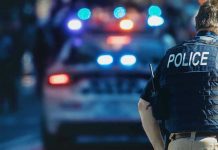
Tesla’s robotaxi service launch in Austin is marred by concerning safety incidents, including steering wheel jerks and illegal maneuvers, just as Elon Musk announces plans to deploy thousands more autonomous vehicles.
Key Takeaways
- Tesla has launched a limited robotaxi service in Austin with 20 Model Y vehicles at $4.20 per ride, requiring human safety monitors to remain onboard.
- The service has already demonstrated concerning behavior, including erratic steering and crossing double yellow lines during operation.
- Despite these issues, Musk plans rapid expansion to over 1,000 robotaxis in Austin within months and one million nationwide by 2026.
- The current fleet operates in a carefully geofenced area, raising questions about how the technology will function in less controlled environments during expansion.
- Tesla’s approach using only cameras rather than more expensive sensors has drawn criticism from safety experts.
Troubled Debut in the Lone Star State
Tesla’s long-promised robotaxi service has finally arrived in Austin, Texas, but the launch has revealed concerning flaws in the technology that should alarm potential users. The service currently operates with 20 Model Y vehicles through an invite-only app, offering rides at a suspiciously specific price of $4.20. While Musk’s fans celebrated the debut, safety concerns immediately surfaced when one of the autonomous vehicles demonstrated erratic behavior at an intersection, jerking the steering wheel unpredictably. This incident raises serious questions about whether this technology is truly ready for public deployment, especially given Musk’s ambitious expansion plans.
The service currently operates within a restricted zone in South Austin, deliberately excluding more challenging areas like the local airport. Each robotaxi includes a Tesla employee sitting in the front passenger seat as a safety monitor – a clear indication that the company itself doesn’t fully trust its autonomous system. The carefully mapped and geofenced operating area provides optimal conditions for the vehicles, yet they still demonstrated navigation difficulties. If these problems are occurring in the most favorable environment possible, serious concerns arise about how these vehicles will perform once deployed more widely.
Alarming Safety Incidents
The most disturbing aspect of Tesla’s robotaxi launch involved a Model Y that crossed solid double yellow lines to enter a left turn lane – a clear traffic violation that would result in a ticket for a human driver. This wasn’t simply a minor navigation error but a fundamental safety breach that could have resulted in a head-on collision with oncoming traffic. The incident suggests the vehicle became confused about its intended route, a basic navigation error that shouldn’t occur in a system ready for public deployment. These vehicles are operating on meticulously mapped routes, yet still making errors that would fail a basic driver’s license test.
“We are being super paranoid about safety,” said Elon Musk.
Despite Musk’s assurances about safety, Tesla’s approach using only cameras instead of more comprehensive sensor systems like LiDAR raises legitimate concerns among automotive safety experts. This cost-cutting measure may help Tesla’s profit margins, but it limits the vehicles’ ability to detect obstacles in challenging conditions. The company’s driver assistance technology has already faced multiple federal safety investigations, recalls, and customer complaints. These new robotaxis represent an escalation of risk, as they’re now operating without a driver ready to take control in an emergency situation.
Unrealistic Expansion Plans
Musk’s ambitious projection to deploy over 1,000 robotaxis in Austin “within a few months” and one million across America by 2026 appears increasingly unrealistic given the technology’s current performance. This pattern of overpromising isn’t new – Musk originally claimed Tesla would have one million robotaxis operational by 2020, a deadline that came and went with nothing to show. The company is now planning to produce a purpose-built “Cybercab” next year, but given Tesla’s history of missed deadlines with the Cybertruck, skepticism is warranted.
“will work fine for perhaps hours at a time and then randomly make very serious mistakes in ways that are not necessarily repeatable,” said Sam Abuelsamid.
The Austin launch represents a concerning pattern where American consumers are treated as guinea pigs for unproven technology. While competitors like Waymo have taken a more measured approach with extensive testing before deployment, Tesla appears to be rushing its robotaxi service to market despite obvious flaws. The company’s expansion plans would require operating beyond carefully controlled environments, introducing these vehicles to more complex traffic scenarios where the stakes for errors are much higher.











